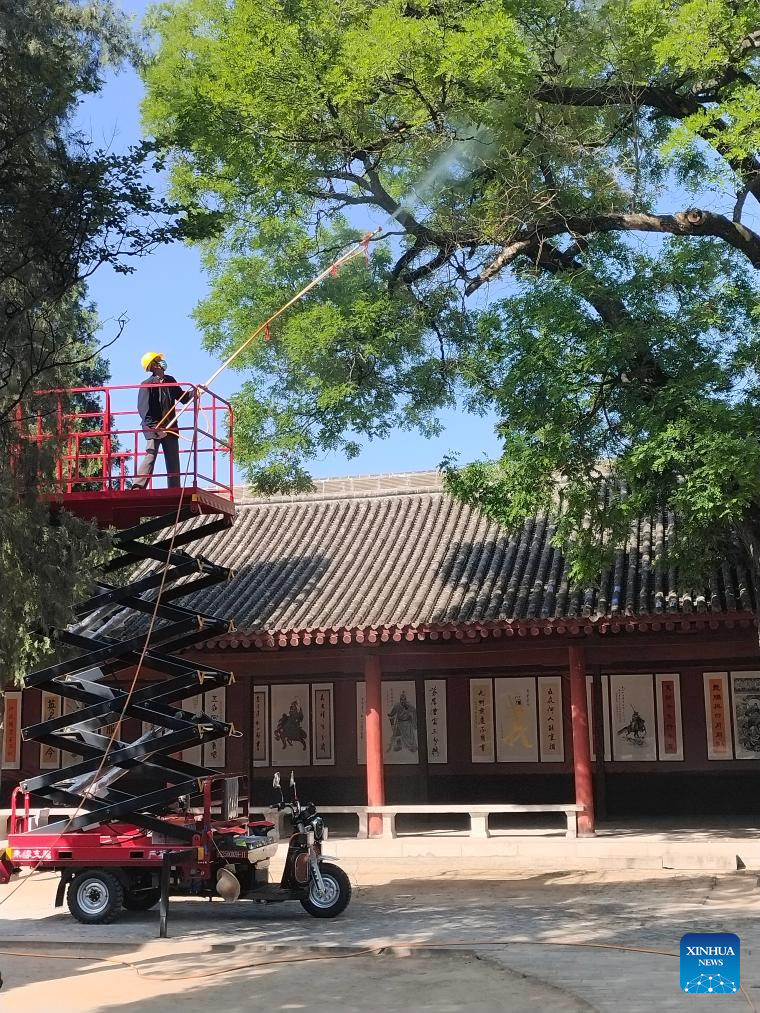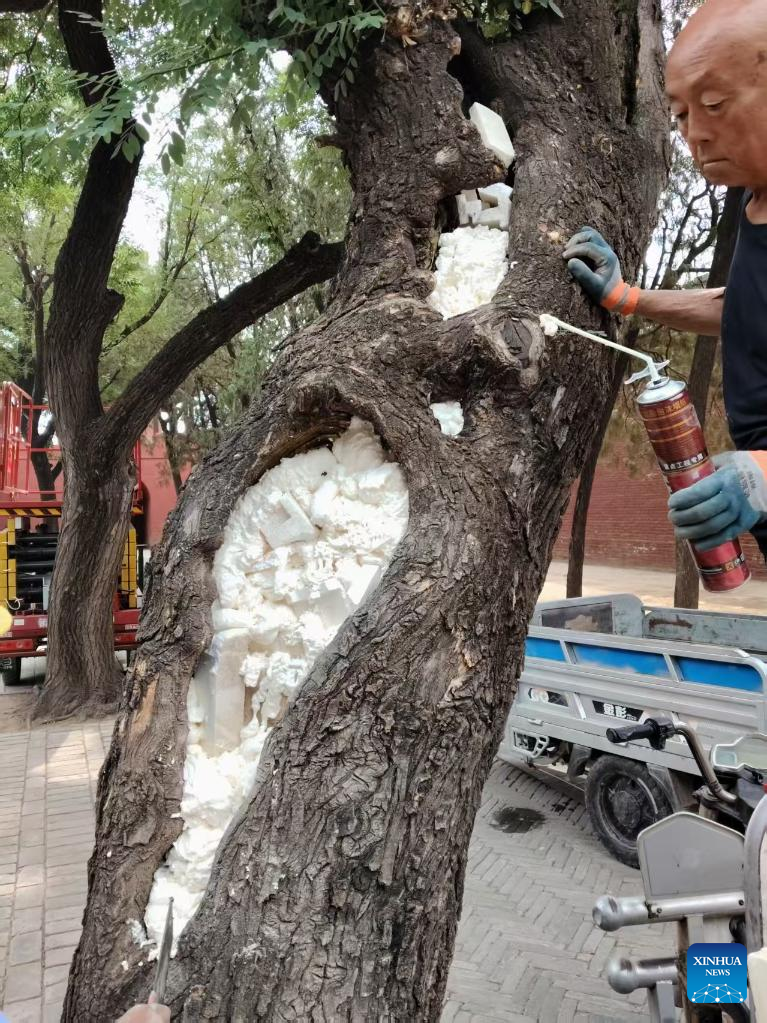Across China: Ancient trees stand tall thanks to better protection
Source: Xinhua
Editor: huaxia
2025-08-22 17:43:45

This photo taken on July 20, 2025 shows a view of the Temple of Guan Yu in Yuncheng, north China's Shanxi Province. (Xinhua)
TAIYUAN, Aug. 22 (Xinhua) -- In the Temple of Guan Yu in the city of Yuncheng, north China's Shanxi Province, towering cypresses and Chinese scholar trees have endured and survived the passage of centuries.
From March to July this year, experts gave more than 20 of them a fresh round of care, by inspecting for pests, cleaning tree hollows and filling decayed spots with eco-friendly materials, all in a quest to help these giants stand firm in the face of the test of time.
With age, pests and extreme weather taking their toll, some ancient trees at the temple have shown signs of decline. "Protecting these precious 'living cultural relics' relies on scientific care and professional restoration," said Guo Bo, deputy head of the temple's cultural heritage conservation office.
Guo revealed that the temple and two nearby heritage sites, all dedicated to Guan Yu, a deified historical figure from the Three Kingdoms period (220-280 A.D.) of China, host 159 ancient and notable trees -- the oldest of them has stood for about 1,800 years.
To safeguard these trees, local caretakers have registered and labeled each tree, and applied tailored protective measures such as reinforcement of trunks and the fertilizing of roots.
These efforts reflect a broader campaign across China to better preserve ancient and notable trees. The former are defined as those that are over 100 years old, and the latter as those with historical, cultural or ecological importance.
A national survey conducted between 2015 and 2021 identified 5.08 million ancient and notable trees in China.
In January this year, China introduced its first national-level regulations to protect ancient and notable trees, which took effect in mid-March. These regulations established legal frameworks for resource surveys, conservation and cultural preservation -- as well as penalties for damaging these natural assets, thereby addressing gaps in existing laws. They also encourage scientific research and the application of advanced technologies in the conservation of ancient trees.
Across the country, local authorities and institutions are exploring new ways to improve the protection of these trees.
At Jinci Museum in Shanxi's provincial capital of Taiyuan, experts have developed a patented technology to address compacted soil and water imbalance -- expanding the growth space of tree roots by 40 percent. The museum has also partnered with a local agricultural university to set up laboratories for joint research.
Financial innovation is also lending support. In the southwestern Guizhou Province, authorities have insured 137,500 ancient and notable trees, with total coverage exceeding 3.72 billion yuan (about 521.6 million U.S. dollars).
Public participation, notably, has been growing through "tree adoption" programs. Since March, several districts in east China's Shanghai and a number of this city's parks have allowed residents to "adopt" ancient trees by donating to their upkeep.
Some regions have also tapped into history and tourism to raise public awareness about the conservation of ancient trees. Yuncheng is developing ancient tree parks that present the centuries-old trees alongside the Yellow River landscape and local cultural heritage. The city of Tai'an in east China, meanwhile, has highlighted cultural stories behind renowned ancient trees at its tourist attractions, including Mount Tai.
"Ancient trees are ecological treasures and witnesses of history," said Gao Xuzhen, a researcher at Jinci Museum, who added that through stronger protection -- these trees continue to stand tall and serve as living carriers of cultural roots. ■

A staff member cleans an ancient tree at the Temple of Guan Yu in Yuncheng, north China's Shanxi Province, July 25, 2025. (Xinhua)

Staff members measure an ancient tree at Jinci Museum in Taiyuan, north China's Shanxi Province, July 5, 2025. (Xinhua)

A staff member fills decayed tree hollows with eco-friendly materials at the Temple of Guan Yu in Yuncheng, north China's Shanxi Province, Aug. 5, 2025. (Xinhua)



